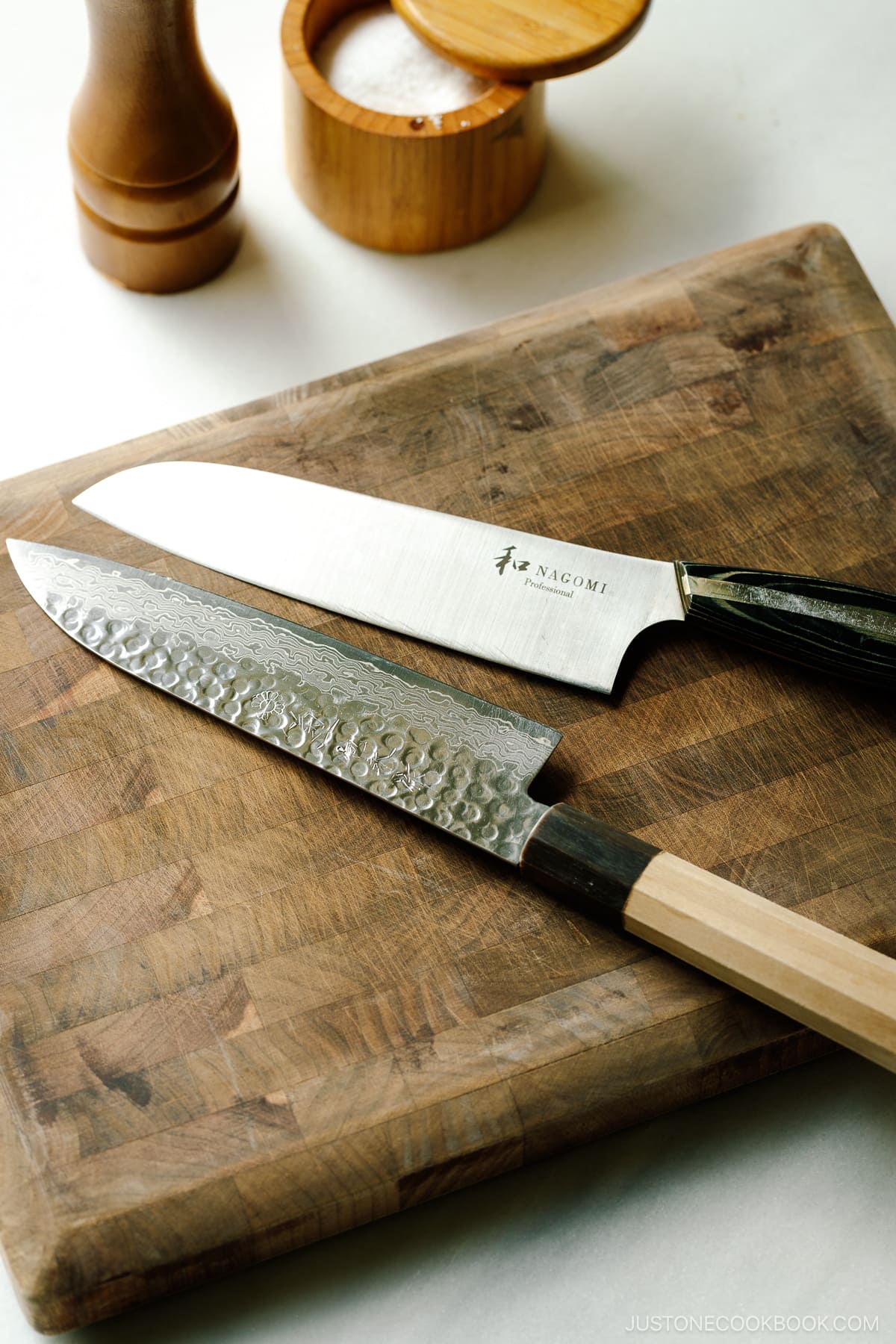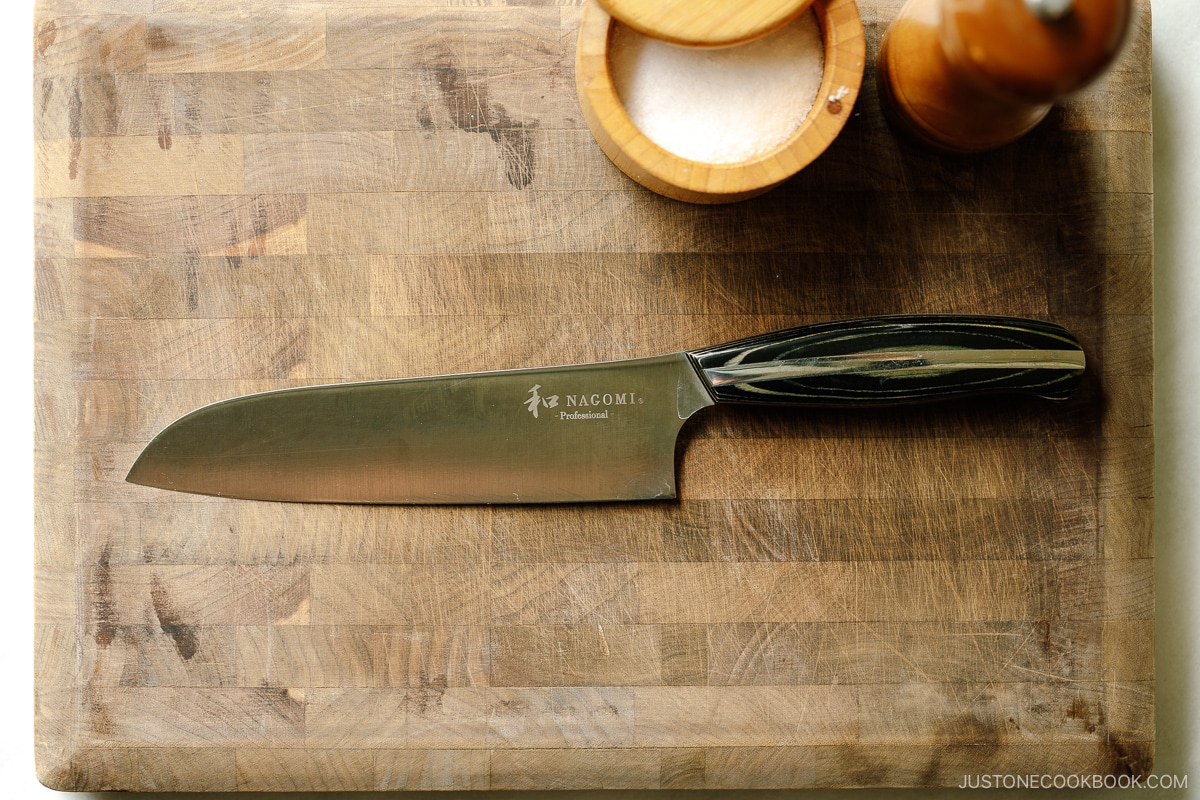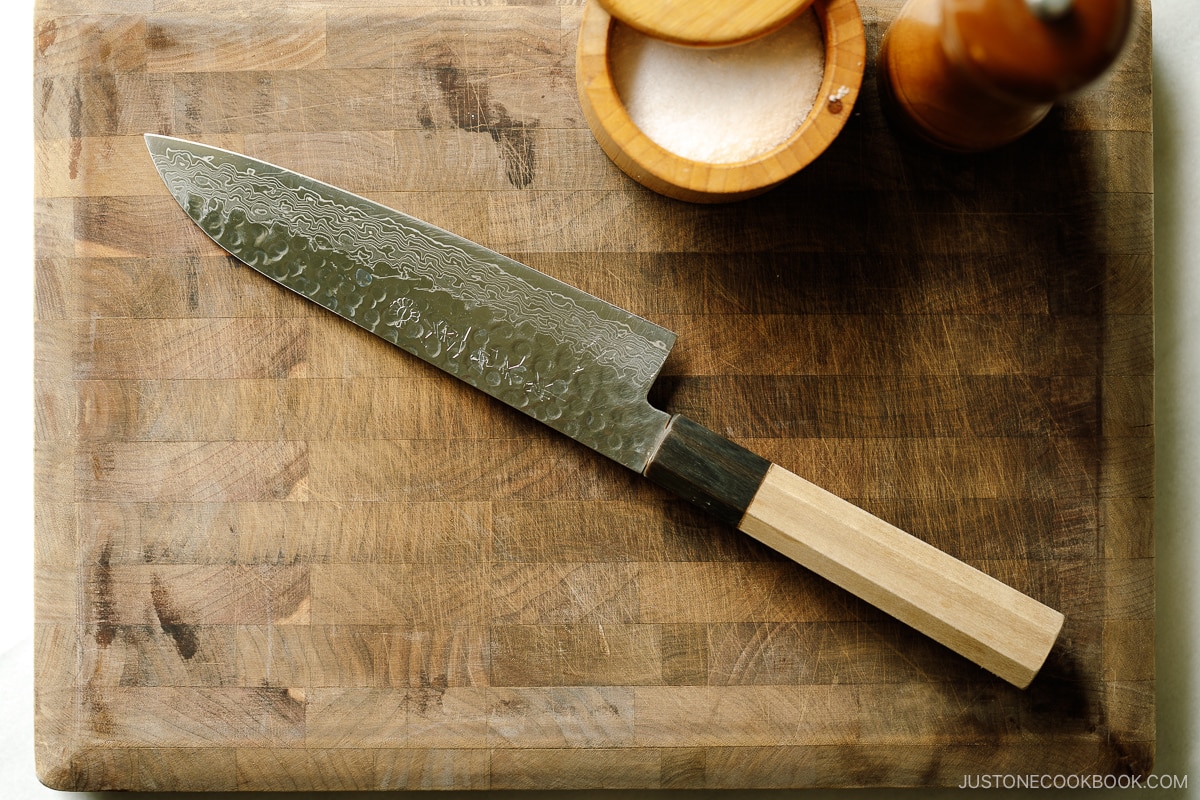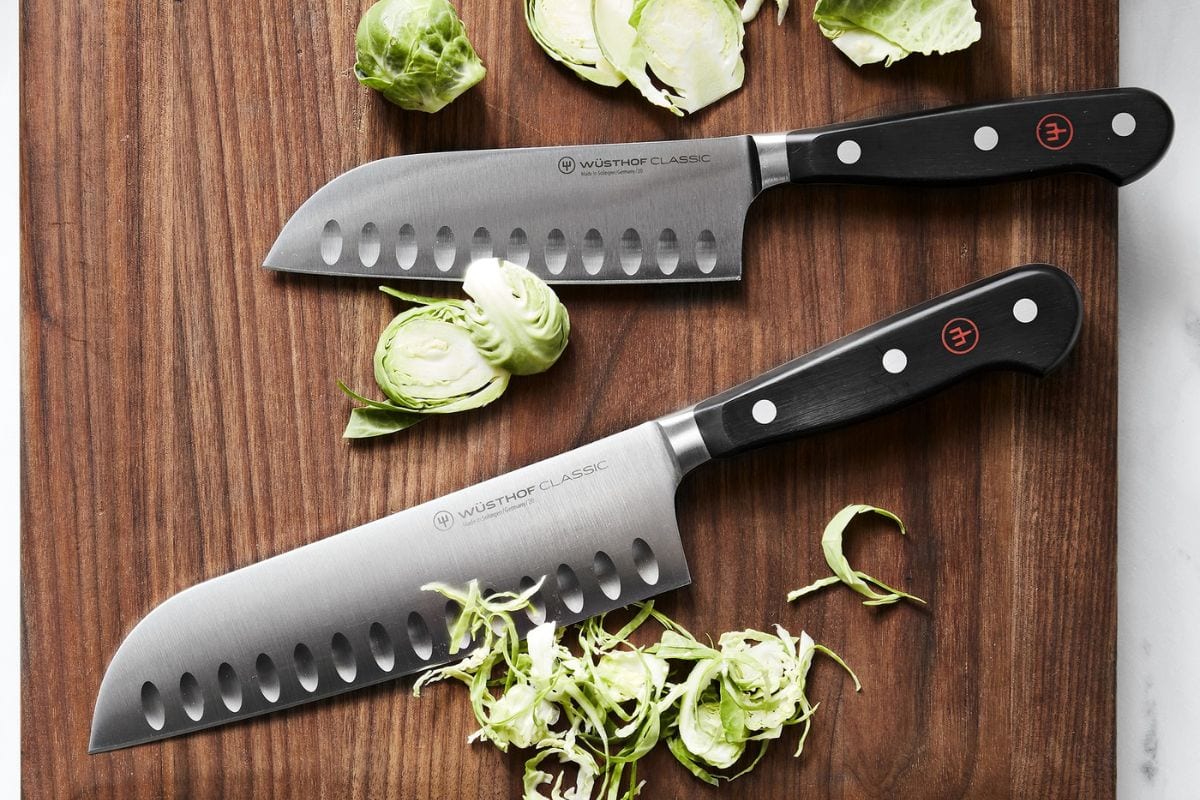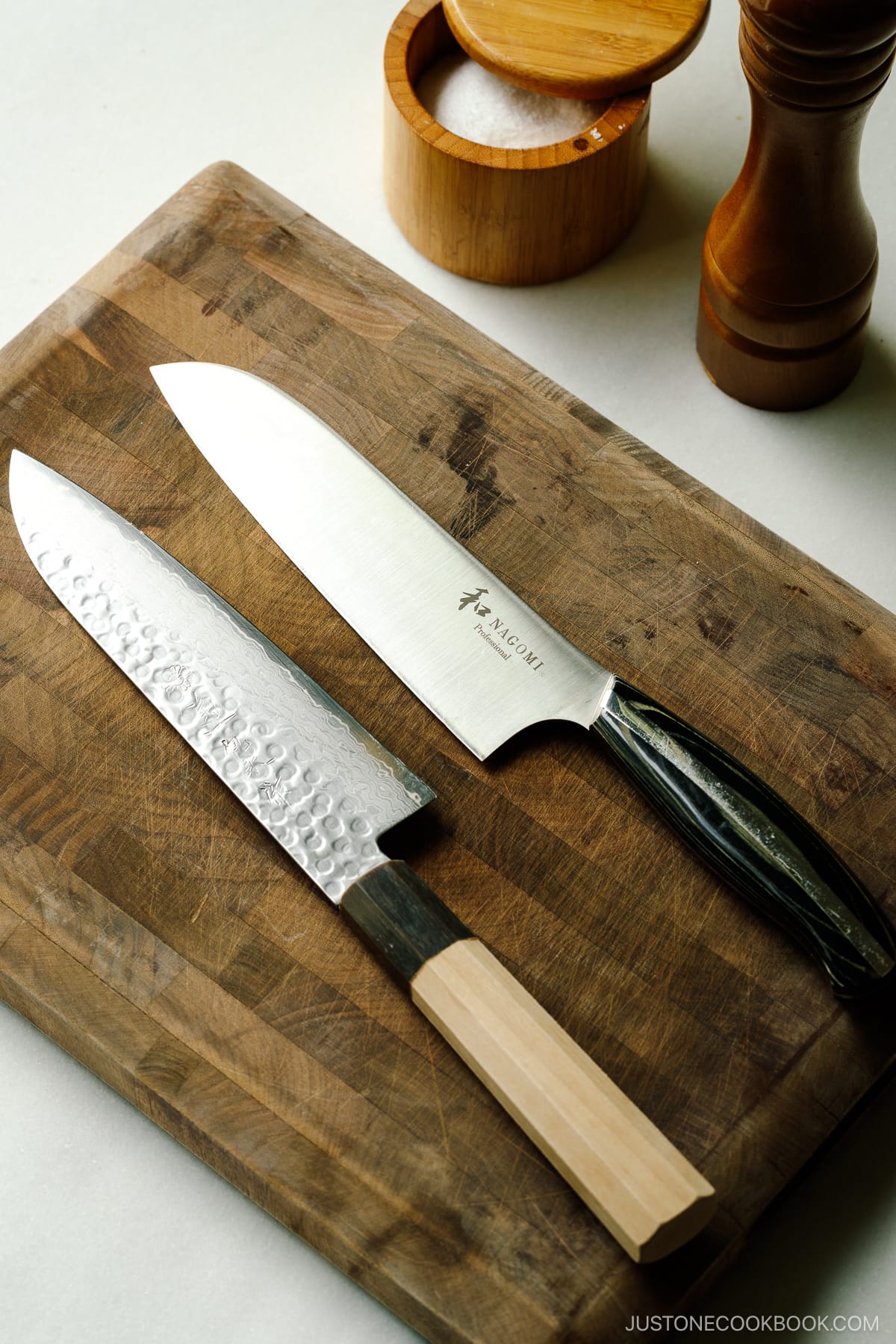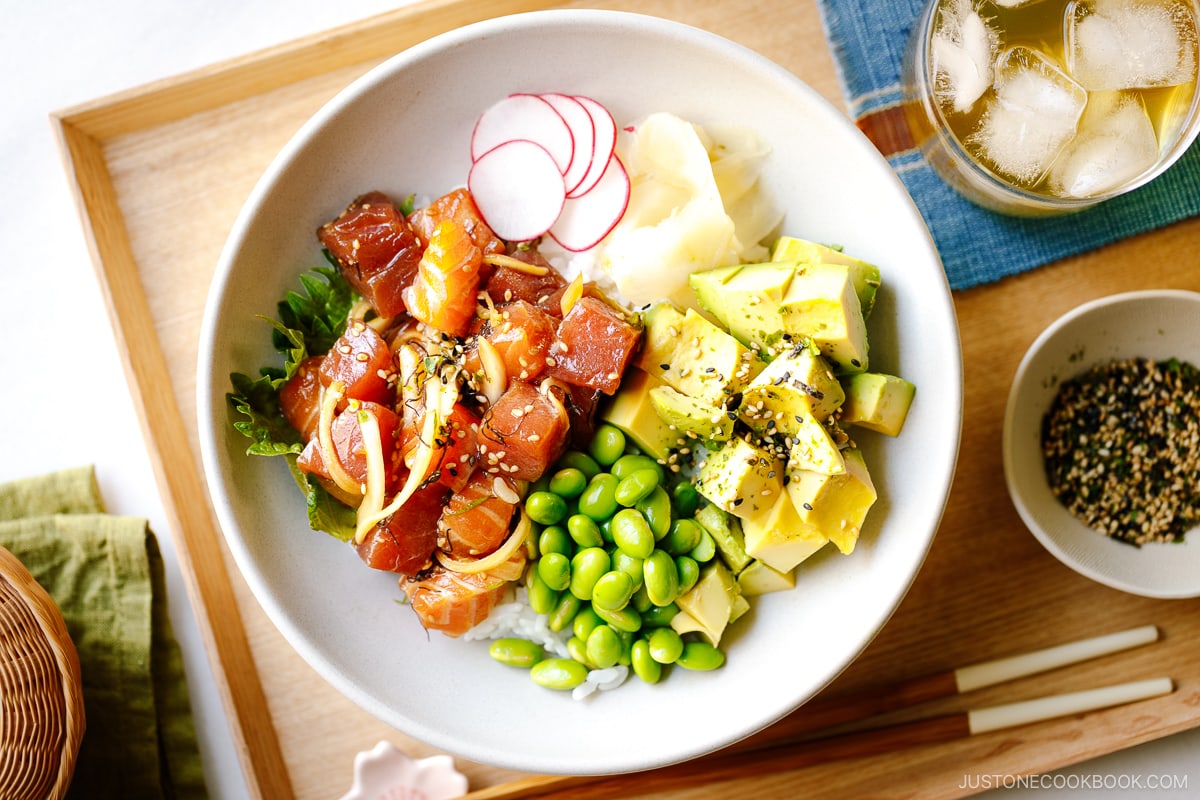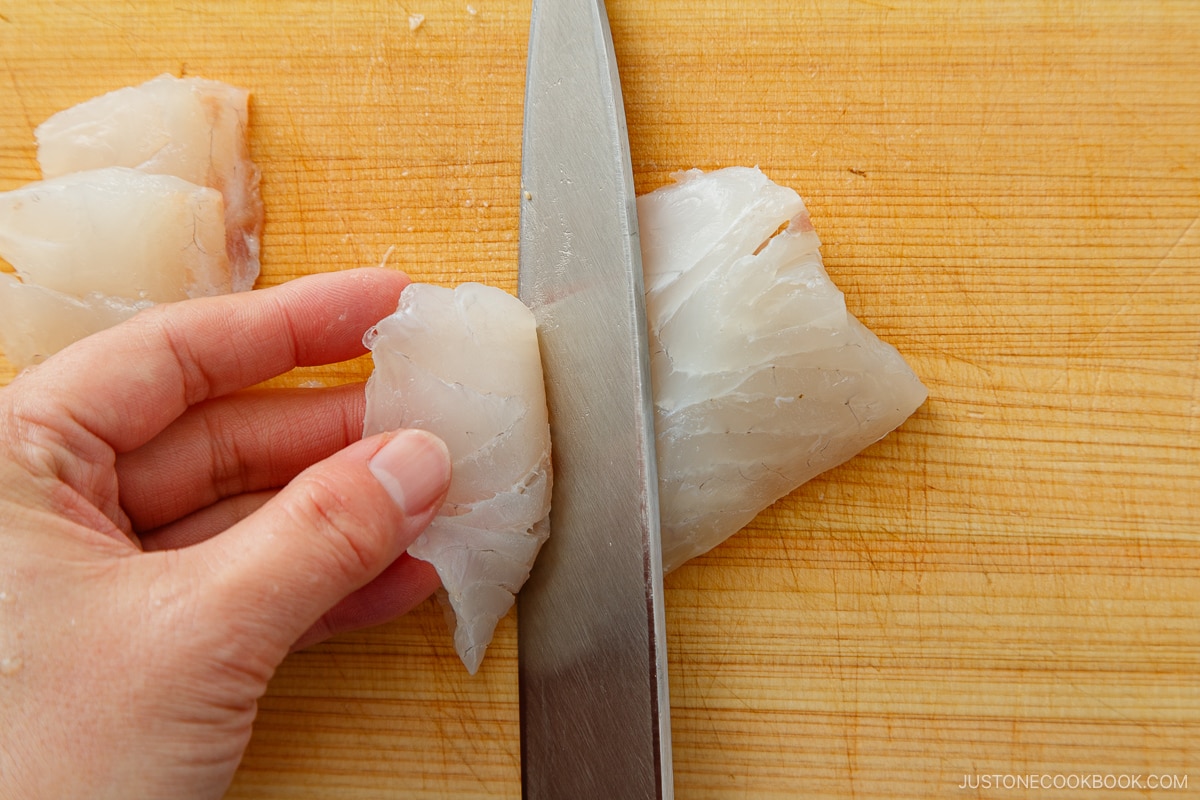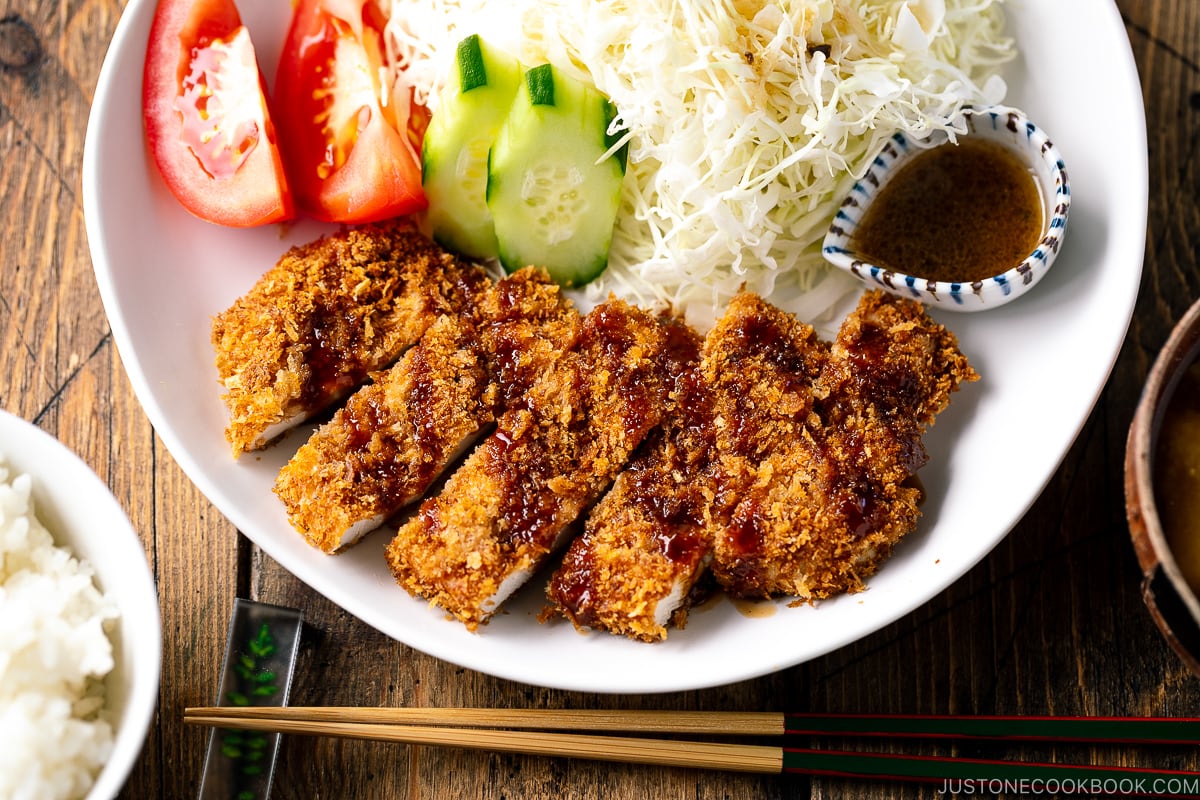When it comes to knives, it may seem like there are endless options available. From carving to chef’s knives, it’s important to figure out what you need your knife for. In the Japanese cutlery world, a Santoku knife, or Santoku bocho (三徳包丁, or ‘three virtues’ knife), serves an all-purpose role (check out my guide on Japanese knives to learn more about different kins). The best Santoku knives can tackle most cutting jobs for meat, fish, and vegetables with ease, working as a versatile option that’s long been the go-to choice for Japanese home cooks. To create my list of the best Santoku knives, I included my all-time favorite, the Kikuichi, and the Nagomi knives, along with other top-rated picks from brands like Zwilling and Wusthof. Keep reading to learn everything you need about buying this do-it-all knife.
My Top Picks:
Reviews of The Best Santoku Knives
1. What’s in My Kitchen: Nagomi Professional 7-Inch Santoku Knife
I’ve had the knife for over 10 years, and it’s one of my trusted kitchen tools. The blade is really beautiful, and each one is unique with its patterns. Made in Seki, Japan, it’s a bit expensive but this professional knife quickly slices through meats and vegetables with very little effort. In fact, it’s used by Michelin chefs around the world! It makes cutting something like thin Sashimi much more efficient and accurate for a particularly lovely plate of fish. I also love the stunning black pakkawood handle because it’s light yet sturdy, and the steel is very hard, so it should last a long time before it needs to be sharpened. The Specs:
Blade Length: 7 inches Material: Stainless steel (HRC hardness: 60)
The Pros:
Great performance Made in Seki, Japan Natural wood handle Very durable
The Cons:
Expensive
Buy the Nagomi Professional 7-Inch Santoku Knife:
2. My Other Favorite: Kikuichi 67-Layer Mirror Damascus Tsuchime 7-Inch Santoku Knife
If you want a Santuko for beauty alone, this option from Kikuichi is the winner. The unique mirror-like 67-layer hand-hammered stainless steel blade is both stunning and effective in the kitchen. But that’s no shock with Kikuichi’s centuries of experience making knives in Nara, Japan. It’s one of the finest knives I’ve ever used, and it feels light in your hands to make quick work of prepping. The octagonal magnolia-wood handle is both comfortable and beautiful, and it’s also hand-engraved with the Kikuichi chrysanthemum logo for a lovely touch. Because it ships directly from Japan, you’ll have to wait a bit to receive it, but I believe the wait is worth it for brag-worthy cookware. The Specs:
Blade Length: 7 inches Material: 67-layer hand-hammered stainless-steel blade
The Pros:
Great performance Affordable price point Good design
The Cons:
Trickier to ship
Buy the Kikuichi 67-Layer Mirror Damascus Tsuchime 7-Inch Santoku Knife:
3. Best Budget Pick: Mercer Culinary M20707 Genesis 7-Inch Santoku Knife
If you want to try out a Santoku knife without spending a ton of money, the M20707 from USA-based Mercer Culinary is a great pick. This knife, made in Taiwan, boasts a high-quality German steel 7-inch blade and a comfortable, ergonomic handle. I like that it’s affordable enough, so it still serves as a good learning tool if you’re new to Santoku knives and want to get some practice before investing in a higher-end model. While it may not look or feel as artfully crafted as some of the more expensive knives on this list, this workman’s model from Mercer gets the job done. The Specs:
Blade Length: 7 inches Material: High-carbon German steel
The Pros:
Great performance Affordable price point Good design
The Cons:
May not be as comfortable to hold May need frequent sharpening
What Others Are Saying: Buy the Mercer Culinary M20707 Genesis 7-Inch Santoku Knife:
4. Best Mid-Level: Mac Knife Superior Santoku Knife, 6-1/2-Inch
If you have a bit more money to spare, this superior Santoku from Mac Knife is a notable step up from my budget choice by Mercer. Built and hand-sharpened by craftsmen in Seki, Japan, this model comes with a nice, sharp edge that’s long-lasting and easy to sharpen. The weight and balance of this pick seem to be near ideal for most cooks, too, at just 8.4 ounces, and it’s a bit shorter than other knives on this list at 6.5 inches long. While it’s not as aesthetically pleasing as some more expensive options, this model hits a sweet spot of price and quality. Just take proper care of it to be sure it doesn’t rust (see my knife guide here!) The Specs:
Blade Length: 6.5 inches Material: Steel
The Pros:
Holds a sharp edge for a long time Durable Well-balanced weight distribution Good for the price
The Cons:
Can rust easily if not treated properly
What Others Are Saying: Buy the Mac Knife Superior Santoku Knife, 6-1/2-Inch:
5. Best Hybrid: Zwilling J.A. Henckels Pro 7-Inch Hollow Edge Rocking Santoku Knife
If you’re not entirely sold on committing to a standard Santoku knife but still want to take advantage of the benefits of the style, this option from Zwilling may be a good choice. While the straight back of the blade offers the precise chopping motion Santoku knives are known for, the broad curve of the edge allows for the rocking motion that’s common in Western knifework. It’s a hybrid design that many reviewers think offers the best of both worlds, though it may make it less precise when cutting something fragile like sashimi. The Specs:
Blade Length: 7 inches Material: Stainless steel
The Pros:
Hybrid of traditional Japanese design and Western-style rocking edge Durable Relatively easy to sharpen Good weight and balance Cuts with ease Attractive
The Cons:
Not straight like a traditional Santoku knife
What Others are Saying: Buy the Zwilling J.A. Henckels Pro 7-Inch Hollow Edge Rocking Santoku Knife:
6. Most Durable: Wusthof 4183 Wusthof Classic Hollow Edge Santoku Knife 7-Inch
The Specs:
Blade Length: 7 inches Material: Stainless steel
The Pros:
Sharp Durable Granton edge that prevents sticking Lifetime warranty Comfortable
The Cons:
Glides through food a bit too easily Expensive
What Others are Saying: Buy the Wusthof 4183 Wusthof Classic Hollow Edge Santoku Knife 7-Inch:
Other Santoku Knives to Consider
Misono UX10 Santoku 7.0-Inch
Victorinox Fibrox 7-Inch Granton Edge Santoku Knife
Shun Classic 7-Inch Hollow-Ground Santoku All-Purpose Kitchen Knife
Tojiro Professional Santoku Chef Knife VG10 + 13 Chrome Stainless Steel, 6.7-Inch
Misen Japanese Santoku Chef Knife 7.5 Inch High Carbon Stainless Steel
Why You Can Trust Me
Like most home cooks from Japan, the first and primary kitchen knife I learned to use was the Santoku. Therefore, I have a good sense of what to look for in a high-quality Santoku. Specifically, I think the most important aspects of any Santoku knife include a sharp blade that can hold its sharpness through extended use, a comfortable handle that sits naturally in the hand, light overall weight, and good balance.
What to Consider Before Buying a Santoku Knife
Here are some things to think about before buying a Santoku knife.
Blade: As with any type of knife, look for sharp edges that retain sharpness over time when shopping for a quality Santoku knife. Blades on Santoku knives come in a variety of lengths, and we included options that range from 6.5 to 9.5 inches. The best blade length for you will ultimately depend on what you’re most comfortable with, but a longer blade can be helpful when carving meat or cutting thin slices of poultry.
Design: You should pick a knife with a handle that’ll offer a comfortable grip so it won’t tire your wrist when cutting a large amount of meat and vegetables. There should also be a nice balance between the handle and blade so it feels sturdy when using the knife. Some of the knives on our list are made from different materials, but it doesn’t matter too much as long as it’s comfortable to hold and heat-resistant.
Price: Before you click ‘add to cart’, make sure you’re purchasing a knife that’s within your budget. You probably shouldn’t spend too much if you’re not sure you’ll use it too often, but if you’ve been eyeing a Santoku knife for months and plan to use it daily, you may want to splurge a bit more.
How to Maintain Your Santoku Knife
As with any kitchen tool, proper maintenance of your Santoku knife is key to extending its longevity. If well cared for, a good Santoku can last for many years. To make sure that yours does, be sure to:
Handwash and fully dry the knife after every use. Rust is the nemesis of a sharp knife! NEVER use the dishwasher, even if your knife is supposedly dishwasher-safe. The harsh chemicals and temperatures in the machine will dull your knife over time. Sharpen your knife at least once a year. Unless you have the time and energy to do this properly, I recommend going to a professional. Use a ceramic (not metal) rod to hone your blade between sharpenings.
For a more in-depth guide to maintaining your Santoku knife, you can refer to my guide to Japanese knives.
What Are Santoku Knives Used For?
Santouku knives are versatile for several tasks, including slicing fish and cutting meat and vegetables. It’s less hefty than a Western-style chef’s knife, which allows you to slice and dice vegetables precisely.
What’s the Difference Between a Santoku And a Chef’s Knife?
A Santoku knife is typically lighter with a thinner blade than a Western-style chef’s knife. A chef’s knife is sturdy with a little heft that does a great job of taking down large cuts of meat and other heavy-duty tasks. A Santoku knife, on the other hand, is more precisely made to slice delicate ingredients, such as fish and vegetables. Both are great to have in your kitchen.
How Do You Sharpen a Santoku Knife?
You can bring your Santoku to a trusted knife sharpener and get it professionally treated by someone with experience. Alternatively, you can learn how to use a whetstone to sharpen your Santoku at home. If you’re new to home sharpening, be sure to practice it on a cheaper knife before trying with your expensive Santoku.
How Do You Order a Santoku Knife from Japan?
You can mail order a Santoku knife directly from manufacturers in Japan. Fortunately, the companies that make the santoku knife I keep in my kitchen, both Kikuichi and Nagomi, have a website for mail ordering from the U.S., so you can forego the trouble.
The Best Recipes to Use a Santoku Knife
To put your santoku knife to good use, here are some of my favorite recipes that require quite a bit of chopping and precise cutting:
Japanese Cucumber Salad Sushi recipes Sashimi Bulgogi (Korean Grilled Beef) Chicken Katsu
Prices were accurate at the time of publication.
